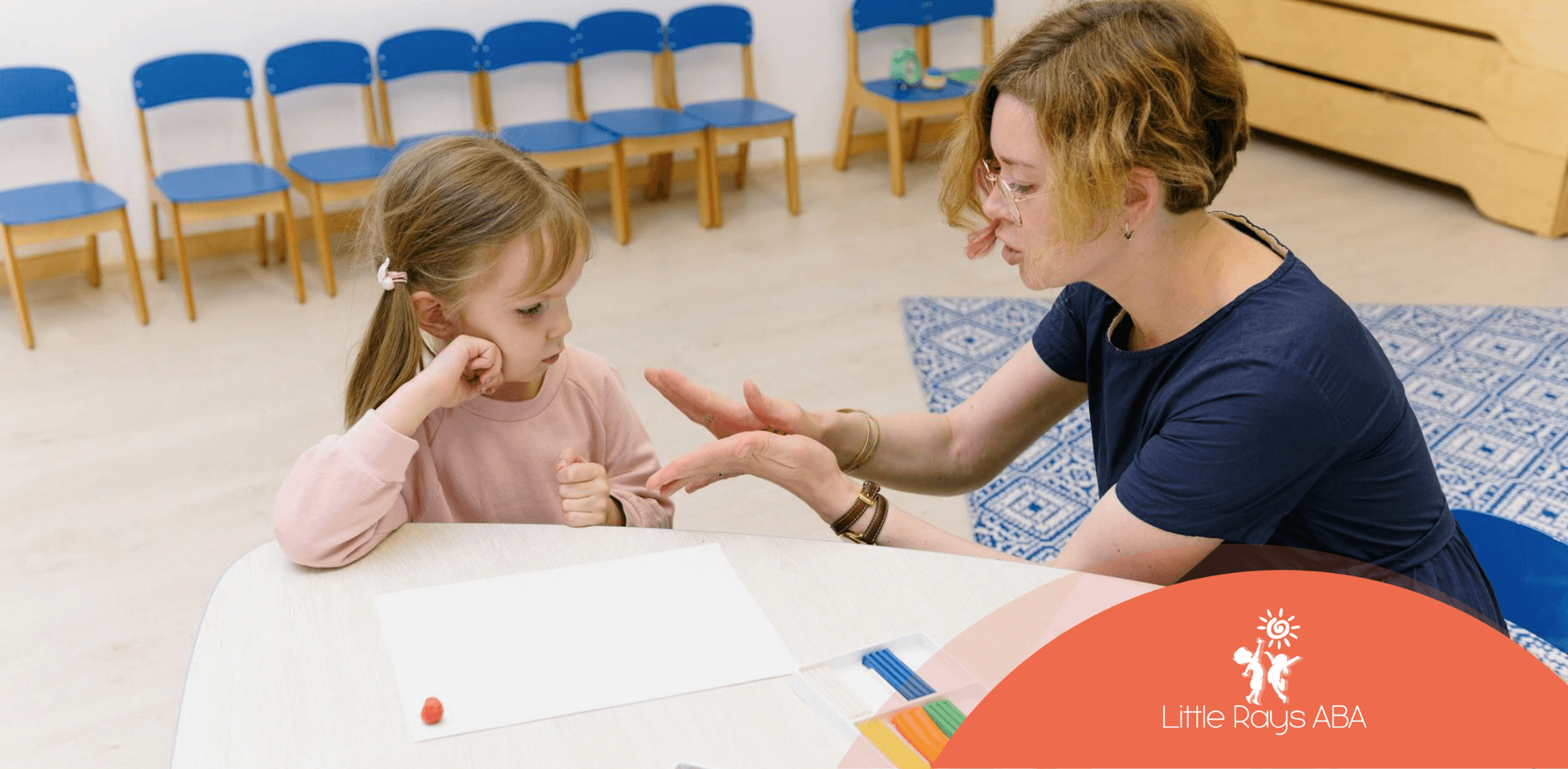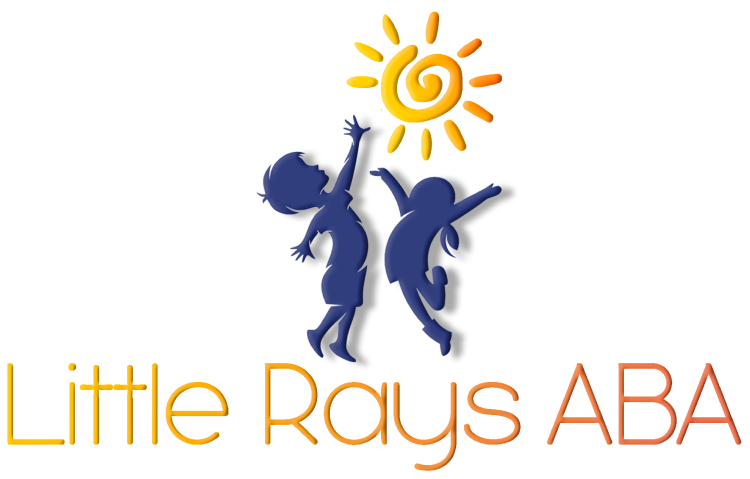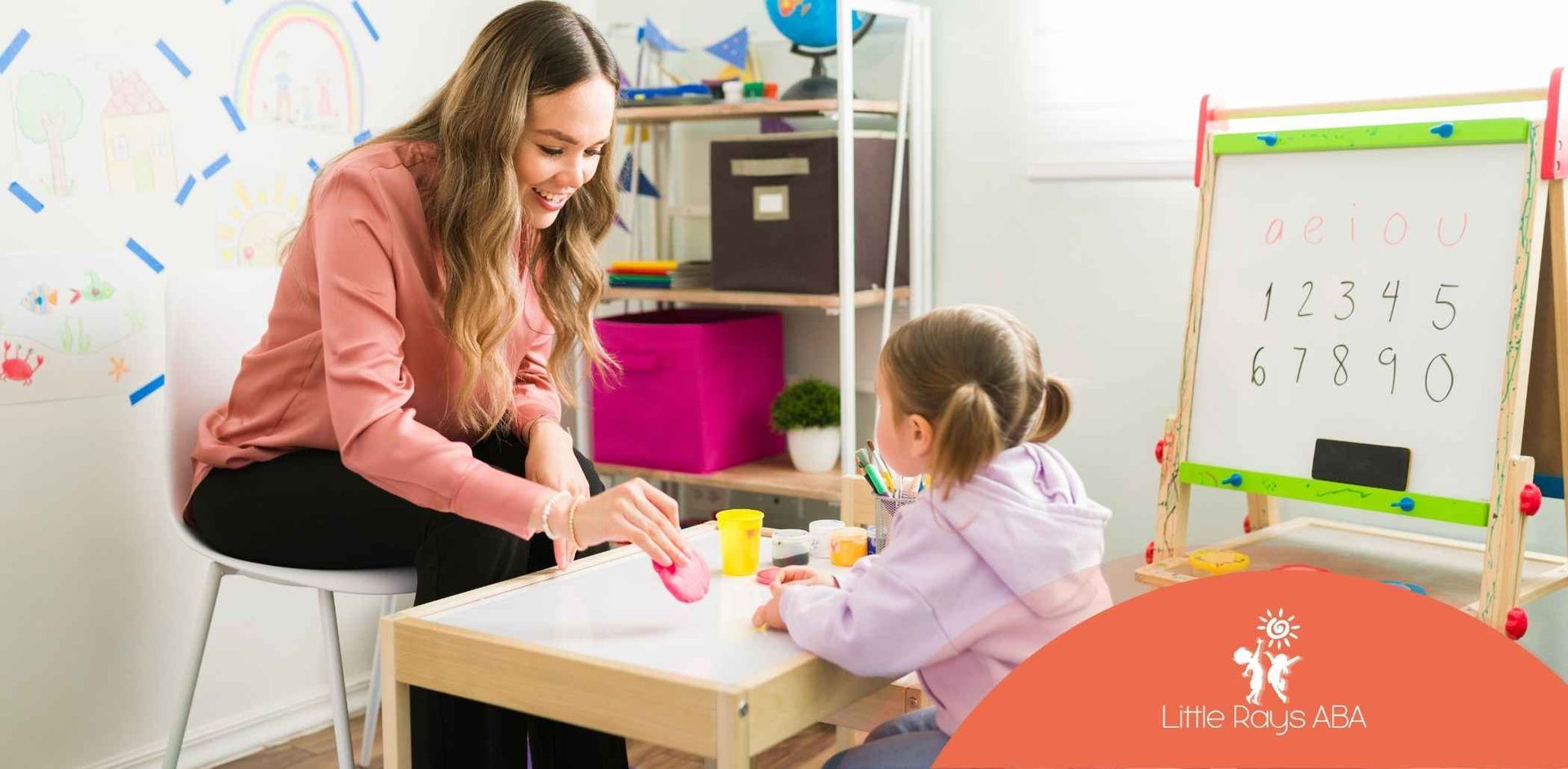
Streamline Support with This Behavior Intervention Plan Template
Behavior challenges in school or therapy settings can feel overwhelming for educators, parents, and even classmates. A well-organized behavior intervention plan template offers a solid framework to tackle these tough moments, ensuring everyone remains consistent, confident, and supportive. By setting clear expectations and addressing possible triggers, this approach helps learners stay more engaged while also easing the pressure on families and professionals who work with them daily.
Below is a comprehensive walkthrough of how a behavior intervention plan (BIP) can be developed and used. This guide draws upon multiple evidence-based practices, including those shared by Panorama Education, MasterABA, and the IRIS Center at Vanderbilt University. Each step aims to help families, educators, and therapists work together to create a supportive environment that leads to better outcomes.
Understand the Purpose of a BIP
A
behavior intervention plan (BIP) is a detailed roadmap designed to improve specific behaviors or achieve particular behavior goals. Typically, it includes:
- A clear, measurable goal.
- Intervention strategies grounded in data and observation.
- A timeline for implementation and review.
- Methods of monitoring and evaluating success.
This personalized plan ensures consistency and clarity: if each adult works from the same playbook, the student receives uniform support. Families, ABA therapists, and school personnel often collaborate to craft the plan. The result is a cohesive strategy that focuses on the root causes of challenging behaviors, rather than simply reducing the symptoms.
Why a Template Matters
Consistency is everything when it comes to changing behavior. A template simplifies planning by guiding users through each critical step. It removes guesswork, encourages data-driven decisions, and ensures key elements, like clear triggers, replacement behaviors, and progress monitoring are front and center. Plus, a fill-in-the-blank format keeps teams from missing any crucial details.
Gather Essential Data
A data-driven foundation is at the heart of every effective behavior intervention plan. Pulling together discipline reports, teacher logs, notes from parents, or even self-reports from the student themselves helps shed light on when, where, and how problematic behaviors appear. Data also reveals patterns, like a spike in disruptive actions during certain times of the day that might otherwise go unnoticed.
Knowing When to Gather Data
Teams might decide to start collecting in-depth data once they see:
- Frequent office referrals
- Repetitive disruptive incidents (e.g., non-compliance, aggression)
- Decline in academic performance due to behavior
- Noticeable social-emotional challenges
These warning signs indicate it may be time to build a behavior intervention plan template. By identifying triggers and reevaluating current strategies, educators and families can catch problems before they escalate. According to Panorama Education, collecting this kind of data helps educators set achievable goals and measure the effectiveness of any changes introduced.
Types of Data to Collect
- Office referrals or incident reports
- Daily frequency of undesired behaviors
- Observational notes from teachers, parents, and other professionals
- Time-of-day or location-based data (for pinpointing consistent patterns)
By creating an organized system for data entry, teams can track trends and measure progress once the plan is put into action. If the learner’s behavior improves, there’s tangible proof of success. If not, the team knows to keep digging for a more suitable strategy.
Conduct a Functional Behavior Assessment
A functional behavior assessment (FBA) is a structured process that goes beyond simply listing problem behaviors. Instead, it uncovers the “why” behind a student’s actions. That deeper understanding helps educators, ABA professionals, and families determine which interventions will help.
Steps in the FBA
- Define the behavior in clear, measurable terms.
- Collect data that pinpoints where, when, and why the behavior might occur.
- Interview staff, family members, or even the student to get multiple perspectives.
- Identify likely triggers and consequences that follow the behavior.
- Develop a hypothesis about the function of the behavior—whether it’s seeking attention, avoiding tasks, or something else entirely.
Through FBA, educators learn the context and root causes. For instance, if a student continually acts out when given a complex writing task, it could signal academic frustration rather than willful disobedience. Armed with these insights, the BIP can highlight practical adjustments, like breaking tasks into smaller steps, resulting in more positive outcomes for everyone.
Develop the Behavior Intervention Plan Template
After the FBA has been completed, the next major step is to fill out a template that weaves together each piece of data and transforms it into an actionable plan. This template also helps ensure that educators, parents, and therapists all remain in sync when new behaviors appear or old triggers pop up unexpectedly.
Below is an example table of what core sections might look like. Each entry can be adapted based on the unique environment or student:
| Section | Details |
|---|---|
| Defined Behavior | Clearly describe the target behavior. Example: “Student repeatedly calls out in class without raising their hand.” |
| Function (Hypothesis) | The suspected purpose of the behavior. E.g., “Student seeks attention from peers or teacher.” |
| Replacement Behavior | An alternative or positive behavior to replace the problematic action. E.g., “Raise hand, then wait to be called on.” |
| Setting Events | Factors that increase the chance of the behavior. E.g., “Limited sleep, missed breakfast.” |
| Antecedent Modifications | Environmental changes to reduce triggers. E.g., “Provide preview of upcoming routine to lower anxiety.” |
| Intervention Strategies | Specific actions adult(s) will take. E.g., “Cue with a verbal reminder: ‘We raise hands to speak.’” |
| Reinforcement Methods | How desired behavior will be encouraged. E.g., “Positive feedback every time student raises hand.” |
| Consequence Strategies | Responses if behavior occurs anyway. E.g., “Prompt re-direction, then allow a chance to correct.” |
| Progress Monitoring | Tools and frequency for data collection. E.g., “Teacher logs every time student raises hand successfully.” |
| Timeline & Review | Date for follow-up. E.g., “Review after two weeks of consistent implementation.” |
Filling in the Template
Teams should complete each section of the table using clear language. Jargon can cause confusion, so it’s helpful to define unfamiliar terms or abbreviations. If everyone dedicates time to filling out the template carefully, they’ll walk away with a plan that can be shared widely and implemented consistently.
Additional Tips for Clarity
- Use short, direct sentences.
- Ensure the goals are measurable (e.g., “Student will raise hand 80% of opportunities for teacher attention”).
- State exactly how, when, and where progress will be measured so there’s zero ambiguity.
A thorough behavior intervention plan template doesn’t exist in a vacuum. It reflects a learner’s needs, triggers, and potential solutions. The more specific, the better.
Implement the BIP with Consistency
Even the best plan won’t create meaningful change if it’s not carried out consistently in day-to-day routines. Educators might feel pressed for time, parents may have a lot on their plates, and therapists may juggle multiple children or clients. Still, keeping everyone on the same page is essential.
Strategies to Encourage Consistent Use
- Conduct mini-workshops or quick staff meetings to walk through the BIP.
- Keep copies of the plan or a summarized version in easy-to-access places.
- Hold brief weekly check-ins to see what’s working and where adjustments are needed.
- Provide families with simple daily or weekly feedback forms, giving them a real-time pulse on how the plan is going.
Moreover, consistency includes establishing similar routines across settings (e.g., school, home, clinic). For instance, if educators use a token system to reinforce good choices, parents or therapists can try something similar, like a simple star chart. This unified front helps the student generalize their new skills.
One Example in Practice
Consider a sixth-grade student named Jason who displayed aggressive behavior whenever he fell behind in class. According to research shared by Student Achievement Solutions, consistent implementation of a plan helped reduce these outbursts significantly, and Jason’s academic engagement rose. By coordinating at home and school, Jason’s parents and teachers used a consistent set of reinforcements and consequences, making it easier for him to understand expectations wherever he went.
Monitor Progress and Evaluate Results
Once the plan is in action, progress monitoring helps teams gauge what’s working. Data collection shouldn’t be a one-time event. Instead, it’s ongoing, allowing the group to notice if improvements level off or if new behavior patterns surface.
Methods for Tracking Progress
- Direct Behavior Rating (DBR):
Quickly note how students behave during specified intervals.
- Scatterplot recording: Track a behavior’s time and place, spotting patterns like times of day or specific situations.
- Systematic direct observations: Observe and record each instance of the target behavior in a structured way.
According to the IRIS Center at Vanderbilt University, these data points are particularly useful when graphed. Graphs let teams quickly see patterns or changes in behavior over days or weeks. They also provide a clear visual for families who might feel less comfortable sifting through raw data. If progress stalls, the team can adjust the intervention without waiting until the next official review.
How Often to Review
Many professionals revisit the BIP every two to four weeks, although the exact schedule might vary. If the student is in crisis, more frequent check-ins (like weekly) can help ensure timely adjustments. If the student is improving rapidly, teams might decide to step down the intensity of the intervention, or shift focus to maintaining the gains.
Address Common Challenges in BIP Implementation
A behavior intervention plan template isn’t a magic wand. Challenges can crop up, particularly in environments with limited resources or staff turnover.
Gaining Buy-In from All Adults
Sometimes there’s skepticism about whether a structured plan will truly work, especially if the behavior in question has been difficult to manage for a long time. Clear communication is the best way to address this:
- Share real-life successes from similar situations.
- Spotlight positive data, such as a reduction in referrals or fewer interruptions in class.
- Invite feedback from each adult who interacts with the student so they feel heard and valued.
Inconsistent Data Collection
When too many details slip through the cracks, it becomes difficult to tell which parts of the BIP are working. Team leaders might consider rotating data-collection duties or using digital tools that remind staff to log information quickly.
Limited Time and Resources
Budget restrictions or a shortage of trained staff often make behavior interventions challenging. In these cases, it helps to focus on small, manageable adjustments rather than large-scale program changes. Tweak the environment where possible, or pick just one high-impact strategy. It’s better to start small with fidelity than to attempt sweeping changes that get dropped later.
Communication Breakdowns
If teachers don’t share daily updates or parents don’t know which strategies are used in class, gaps appear. Regular check-ins or a shared electronic log can prevent confusion. Setting guidelines for how and when progress will be reported also helps keep everyone in the loop.
Consider Ties to PBIS and MTSS
Many schools use frameworks like Positive Behavioral Interventions and Supports (PBIS) and multi-tiered systems of supports (MTSS). BIPs can fit seamlessly into these models.
- Tier 1: Universal supports for all students, such as classroom rules and reward systems.
- Tier 2: Targeted interventions for students whose needs go beyond Tier 1, possibly including small groups or the popular Check-In/Check-Out (CICO) system.
- Tier 3: Intensive interventions designed for students with persistent challenges, typically requiring a more comprehensive BIP.
By aligning the plan with broader frameworks, teams maintain consistency and structure at every level of schoolwide support. A BIP might originate at Tier 2 but continue to evolve into a Tier 3 intervention if the student requires more targeted attention.
Explore Evidence-Based Interventions
Selecting sound strategies is key to a successful plan. Research-backed interventions help teams avoid guesswork. Some examples include:
- Differential reinforcement: Rewarding an alternative behavior instead of the unwanted one.
- Task analysis: Breaking activities into smaller steps so the student experiences quick successes.
- Visual supports: Using schedules or picture cues to guide transitions.
- Check-In/Check-Out (CICO): Students start and end the day with a quick meeting to set goals and reflect on progress.
The right combination depends on the behavior’s function, the student’s needs, and the context (school, home, clinic). It’s always smart to review recommended practices from credible sources such as MasterABA or IRIS Peabody Vanderbilt Edu.
Adjust and Refine Over Time
A Behavior Intervention Plan isn’t set in stone. According to MasterABA, a good BIP evolves as the learner’s needs or context changes). For instance, if the student starts succeeding at managing frustration with fewer prompts, the plan might move to reinforcing more independent responses. Conversely, if new problem behaviors crop up, the plan can be updated to address them.
Keys to responsive revision
- Look for feedback loops:
Encourage teachers, paraprofessionals, and family members to supply regular insights./
- Keep an eye on new triggers: Changes in home routines or classroom dynamics can shift a child’s behavior.
- Document every tweak: When updates happen, record them in the plan. That way, future teams know whether a strategy was already tried or if a new approach is truly fresh.
The goal is to ensure the student’s entire support network remains flexible, adjusting interventions as the situation demands.
Conclusion
Defining a plan that addresses behavior challenges can alleviate stress for families, teachers, and learners alike. Clarity and consistency are everything—when all adults speak the same language, students quickly catch on. An effective behavior intervention plan template supports consistent approaches, helping learners build better habits and confidence.
Ensuring thorough data collection, identifying the function of each behavior, and using research-based strategies keeps the plan focused on genuine root causes. It’s easy to overlook subtle triggers or fail to reward small steps toward improvement, so the built-in structure of a template safeguards against oversights. Regular progress monitoring, whether weekly or monthly, provides valuable insights into what’s truly working.
In the end, a successful BIP builds better communication among all parties: families feel informed, professionals feel prepared, and students reap the rewards of a consistent, tailored approach. By investing time in careful planning, teams can streamline their support, helping every child achieve meaningful, lasting growth.
Build Better Behavior Plans with Little Rays ABA
At Little Rays ABA, we specialize in creating individualized Behavior Intervention Plans (BIPs) that truly work because we don’t believe in one-size-fits-all solutions. Our team collaborates closely with families, educators, and professionals to design behavior plans rooted in data, compassion, and proven strategies.
If your child is facing behavioral challenges at home, school, or in the community, let’s work together to build a consistent, effective ABA approach that supports their long-term growth.
Contact us today to learn how our customized ABA therapy plans in Florida can make a difference in your child’s development.
Frequently Asked Questions
What is a Behavior Intervention Plan (BIP)?
A Behavior Intervention Plan is a written, structured strategy developed to address and reduce challenging behaviors in individuals with autism or related conditions. It outlines the triggers, functions of the behavior, and specific techniques to promote positive alternatives.
Who creates and implements a BIP?
Typically, a BIP is created by a Board-Certified Behavior Analyst (BCBA) in collaboration with caregivers, teachers, and other service providers. Registered Behavior Technicians (RBTs) often help implement the plan in therapy or classroom settings.
How is progress tracked in a BIP?
Progress is monitored through consistent data collection, such as frequency counts or duration tracking. Regular reviews allow the team to adjust strategies based on what’s working or not to ensure continued improvement.
SOURCES:
https://www.studentachievementsolutions.com/creating-a-behavior-intervention-plan-a-step-by-step-guide-with-real-life-examples/
https://iris.peabody.vanderbilt.edu/module/bi2-elem/cresource/q1/p01/
https://masteraba.com/behavior-plan/
https://www.panoramaed.com/blog/behavior-intervention-plan-bip
https://pbismissouri.org/wp-content/uploads/2018/08/Tier-3-2018_Ch.-6.pdf
Related Posts





